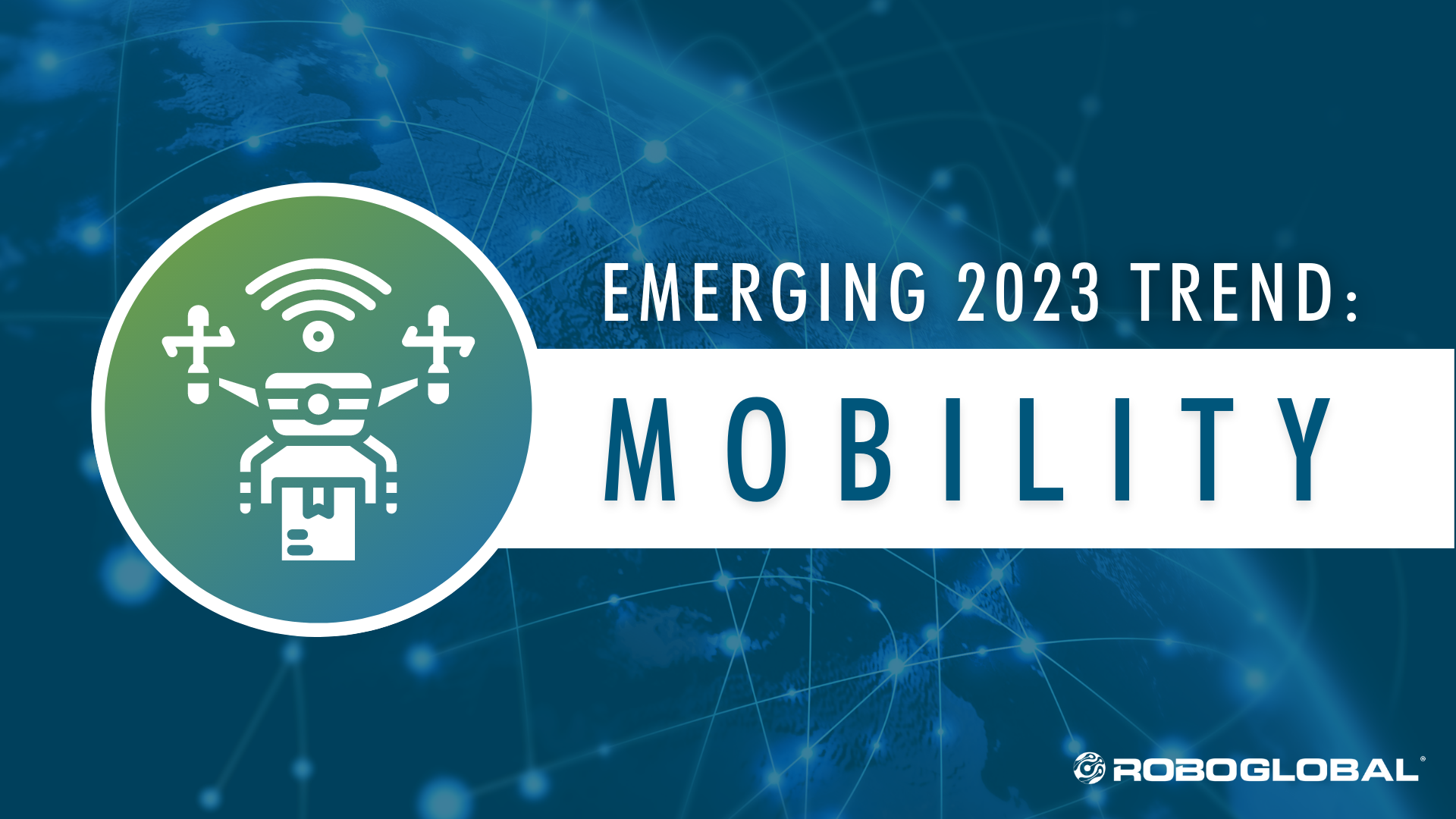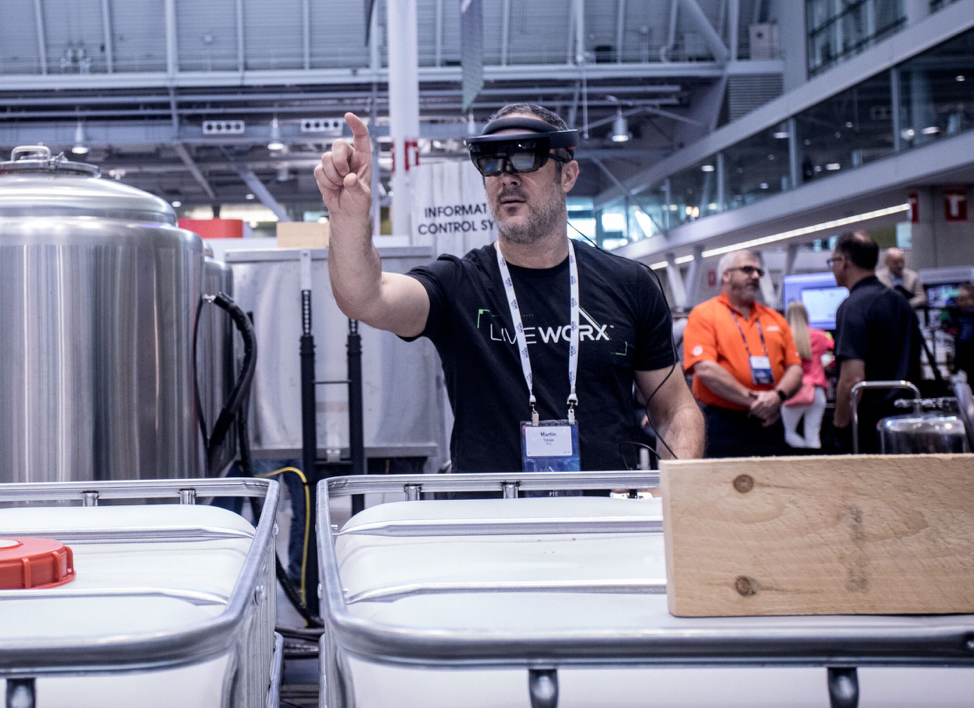Augmented reality. The highly hyped phrase itself conjures up images of a fantastical future. And yet, in the case of ROBO Global Index member PTC, those images actually live up to the hype. A leader in CAD (computer-aided design) and PLM (product lifecycle management), PTC has successfully pivoted its focus toward the Internet of Things, or IoT. The company now boasts a growing ecosystem of customers that are using its comprehensive IoT software development stack to create the future of augmented reality (AR) and virtual reality (VR).
At PTC’s user conference, LiveWorx 20, in Boston last month, I got a first-hand look at how the company’s software and hardware solutions are being used by today’s leading AR/VR solutions providers to help connect users between digital and physical worlds. The results are truly mind-blowing. In fact, when I put on a pair of mixed reality smart glasses for the first time, I found myself shifting quickly from being slightly disoriented to being deeply immersed in the content in front of me. Diving into the simulated world of the HoloLens 2 from PTC partner Microsoft was a thrill unlike anything else I’ve experienced. And yet perhaps what is most amazing of all isn’t the experience of AR and VR, but just how much change this technology is bringing to the world around us. While video games and entertainment may have created the earliest industry buzz, augmented and virtual reality technologies are now driving change in myriad industries—from manufacturing to education to healthcare.
PTC’s strong presence in these verticals is already delivering growth. Shares of PTC rose from $30 in 1Q’16 to over $90 today[1] as the revenue contribution from IoT solutions continues to expand. A recent equity investment by Rockwell Automation added validation to PTC’s IoT strategy and should bolster future expansion. The fact that more traditional manufacturing and industrial companies are using digital technologies to drive competitive advantages is increasing confidence in the future of industrial IoT and the AR/VR applications it supports.
At the conference, one standout example of PTC’s strategy in action was its Vuforia™ platform, currently the industry’s most advanced and widely adopted AR platform. Through its best-in-class computer vision technology and innovative tracking capabilities, Vuforia is transforming business models by incorporating AR across the industrial space, ultimately saving time and money for its customers building out the factory of future. Impressive? Absolutely. But perhaps the thing that impressed me most at LiveWorx was how far AR and VR has come—and where it is going. Clearly, we are at the forefront of a bigger, better, and deeper generation of AR/VR technology, and its potential is enormous for industries, consumers, and investors alike.
The evolving landscape of AR/VR
If you’re new to the world of virtual and augmented reality, understanding the basics can help you grasp the magnitude of these technologies. First, both AR and VR use headsets or eyewear to transmit digitally produced images to the user. In VR, these images are used to create a fully immersive and computer-generated 3D world. In AR, however, digital visuals and text are superimposed over a camera image of a real-world scene. VR creates an illusion. AR enriches a view of a real-world situation. Second, while about $3.6B in funding flowed into the space in the 12 months leading up to Q1 2018, the sector declined in the remainder of the year. In 2019, numbers have lagged.
But that is all expected to change as AR and VR applications deliver a new generation of applications due to the recent and dramatic increase in processing power. Thanks to this shift, AR and VR systems can now track much larger views and, even more importantly, refresh those images instantaneously. As quality improves, smart glasses will get smarter, the scope of AR and VR applications will expand, and new startups are likely to hop on board. That growth is expected to change how certain jobs are performed in industries like industrial design, architecture, oil and gas, and more. In healthcare, physicians are being taught how to regulate their emotions during life-threatening procedures using VR technology that simulates real-world situations. From creating virtual operating rooms to providing a view into the human body using 3D-vision, VR can help to create an immersive, interactive, and highly effective training experience. Facing such widespread potential, the market for smart glasses seems poised to rise. Here are the leading players in the market today:
- Microsoft first introduced the HoloLens in 2016. Though the company was early to market, the solution had numerous problems, including a limited field of view. More recently, Microsoft has made improvements that could change the trajectory of its smart glasses business. The HoloLens 2 has doubled the field of view and comes complete with eye tracking sensors for authentication. New patented imaging technology promises the most immersive experience available on the market, and its AI processing unit connects directly to Azure, Microsoft’s cloud service. And while most competitors’ headsets are aimed at the consumer market, HoloLens 2 is unique in that it is designed for users who can’t carry a laptop or smartphone into the field, including American soldiers—the company was awarded a $480M contract with the U.S. government to develop AR technology for combat. Both Microsoft and Qualcomm, whose Snapdragon 850 Mobile Compute Platform powers HoloLens 2, are ROBO Global Index members.
- Vuzix is also targeting the commercial market with its comfortable and stylish Blade Commercial Edge smart glasses. The glasses offer a high quality display with an 8MP camera and an impressive 4GB of storage. The next step: adding music streaming services via the Alexa app. If Vuzix is able to deliver on its promises, this publicly traded company may see its currently low revenues climb.
- Magic Leap was the darling of the AR world back in 2015 when it raised $1.4B in VC funding, with Google and Alibaba as the company’s largest investors. The company has filed a patent for a virtual retinal display (VRD) that projects a holograph onto the user’s eye for a seamless AR experience. Its Magic Leap One smart glasses are futuristic in design with a user-friendly camera, sensors, speakers, memory, and a powerful optical relay. ROBO Global Index member Nvidia provides the glasses’ CPU and GPU processing power.
- Oculus led the charge for mainstream adoption of VR, raising $75M in VC funding in 2013, and then being acquired by Facebook for $2B one year later. The company has cemented its leadership by hiring key industry minds and delivering a core strategy in the digital video market for mainstream consumers. The company has created a headset and proprietary tracking system that uses infrared sensors to optically track devices, as well as sensing technology for movement tracking. With this functionality on the horizon, we would not be surprised if Oculus enters the commercial space in the near future.
A market that is ripe with opportunity
When I was in Boston, I spoke to dozens of users of PTC’s solutions who are now able to deliver the most promising smart glasses to date. Among them were Gary Johnson, Chief Manufacturing Officer at Ford, and Mike Mikula, Ford’s Chief Engineer, Advanced Manufacturing, who shared that they are piloting a number of new AR/VR and other AI-driven technologies in the automaker’s 80+ factories. (Ford recently signed an expansion deal with PTC/Rockwell after just two quarters, so we expect to see continued progress in the coming years.)
PTC’s customers and the company itself made it clear that AR and VR technologies are beginning to empower workers in myriad industries while improving efficiencies, creating safer workplaces, and reducing operational costs in the factories of the future. Once connected sensors, IoT, simulation and visualization, and data collection enables physical assets to be mapped onto virtual models using an AI engine, AR/VR companies will be able to take this powerful technology to the next level, building virtual worlds—or ‘digital twins’—that could transform commercial industry as we know it. While there’s still time before we see mass market adoption across industries, investors who prepare their portfolios for a future in which AR and VR are a commercial reality will appreciate the long-term growth to come.
By Lisa Chai, Senior Research Analyst, ROBO Global
[1] As of July 10, 2019





